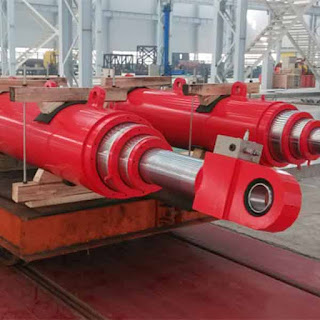Telescopic Hydraulic Cylinder Application And Pressures
A telescopic hydraulic cylinder can be used in several types of applications that require a linear force to be applied over a long distance. While a rod cylinder could potentially perform the job it may be too long when fully collapsed, where as a telescopic cylinder will typically be significantly shorter when in the same position. The collapsed package size plus long stroke capability of a telescopic cylinder is one of the advantages the design offers over a rod cylinder.
Rod cylinders will apply the same force throughout their stroke, assuming that system pressure remains constant. While it is possible to design a telescopic cylinder that applies a constant force, the cost is significantly increased. Generally a telescopic cylinder will be used in applications where a constant force is not required. Both single acting and double acting telescopic cylinders are used in non-constant force applications. The most common of these in mobile applications are dump trucks and refuse vehicles.
In a typical dump truck or trailer application a single acting telescopic cylinder will be used; however, it is possible to see double acting cylinders in dump truck or trailer applications. Double acting telescopic cylinders are most commonly used in applications that require a horizontal, or near horizontal, force to be applied. Refuse pack or eject vehicles and various ejector trailers are typical applications for the double acting cylinder.
The reason for the different cylinder use per application is due to the ability or restriction on being able to retract the extended cylinder. In a typical dump application, the truck or trailer body will be lifted into the air by the cylinder and the weight of the body will cause the cylinder to retract. In some cases the body of the truck or trailer may go "over center," meaning that the body of the vehicle is now pulling on the cylinder once fully extended. In this type of scenario a single stage double acting or a fully double acting cylinder is required to, at minimum, pull the body back far enough to allow gravity to take over. Horizontal, or near horizontal applications, do not have gravity available to assist in the retracting of the cylinder. As a result, an internal hydraulically created force is required. Overhung loads, such as a heavy tailgate or several feet of the body extending past the body hinge, can also create scenarios that require a double acting cylinder.
At the most simplified level, all cylinders generate force and motion in the same way. A fluid is forced into the vessel and it pushes against a movable surface. The available surface area within the cylinder determines the amount of force generated at a given pressure. Interestingly, the pressure is truly the consequence of applying a force.




Comments
Post a Comment